How to choose the right excavator gripper for different tasks?
Selecting the appropriate excavator gripper is crucial for optimizing productivity and efficiency in various construction and demolition projects. The right gripper can significantly impact the performance of your excavator, making tasks easier and more cost-effective. This comprehensive guide will explore the factors to consider when choosing a gripper, how task types influence your selection, and compare fixed and rotating grippers for specific jobs.

Factors to Consider When Selecting an Excavator Gripper

When it comes to choosing the ideal excavator gripper, several key factors come into play. These considerations will help ensure that you select a gripper that is well-suited to your specific needs and requirements.
1. Gripper Size and Capacity: The size and capacity of the excavator gripper are crucial factors to consider. The gripper should be proportionate to the size of your excavator and capable of handling the materials you typically work with. A gripper that is too small may struggle with larger loads, while an oversized gripper can be cumbersome and inefficient for smaller tasks.
2. Material Compatibility: Different materials require different gripper designs. For instance, grippers used for handling scrap metal may have different features compared to those used for handling logs or concrete debris. Consider the primary materials you'll be working with and choose a gripper that is specifically designed or adaptable for those materials.
3. Gripper Opening Range: The opening range of the gripper determines the size of objects it can handle. A wider opening range provides more versatility, allowing you to handle a variety of object sizes. However, it's important to balance this with the closing force, as a very wide opening may compromise the gripper's ability to securely hold smaller objects.
4. Durability and Construction: The construction quality of the excavator gripper is paramount. Look for grippers made from high-strength steel that can withstand the rigors of daily use. The durability of the gripper will directly impact its lifespan and maintenance requirements.
5. Hydraulic System Compatibility: Ensure that the gripper is compatible with your excavator's hydraulic system. This includes checking the hydraulic flow and pressure requirements of the gripper against your excavator's capabilities. Incompatibility can lead to poor performance or even damage to your equipment.
6. Weight Considerations: The weight of the gripper affects the overall lifting capacity of your excavator. A heavier gripper reduces the net lifting capacity, so it's important to balance the gripper's weight with its functionality and your excavator's capabilities.
7. Maintenance Requirements: Consider the maintenance needs of different gripper models. Some may require more frequent servicing or have more complex maintenance procedures. Opting for a gripper with straightforward maintenance can save time and reduce operational costs in the long run.
8. Cost and Return on Investment: While it's tempting to opt for the cheapest option, it's crucial to consider the long-term value. A more expensive gripper might offer better durability, efficiency, and versatility, potentially providing a better return on investment over time.
By carefully considering these factors, you can select an excavator gripper that not only meets your immediate needs but also provides long-term value and efficiency for your operations.
How Does Task Type Influence Your Choice of a Gripper?

The type of task you're undertaking plays a significant role in determining the most suitable excavator gripper. Different jobs require different gripper characteristics to ensure optimal performance and efficiency. Let's explore how various task types influence gripper selection:
Demolition Work: Demolition tasks often involve handling large, heavy debris and require a gripper with a robust construction and high clamping force. For this type of work, consider a gripper with reinforced teeth or edges to withstand the abrasive nature of concrete and metal debris. A wider opening range is also beneficial to accommodate varying sizes of demolition materials.
Scrap Handling: When dealing with scrap materials, especially in recycling yards, a gripper with a good balance of strength and dexterity is essential. Look for grippers with interchangeable teeth or specialized designs that can efficiently handle irregularly shaped scrap metal pieces. A rotating gripper can be particularly useful in this scenario, allowing for better positioning and sorting of materials.
Forestry and Log Handling: For tasks involving logs or tree trunks, a gripper with a large opening range and strong clamping force is crucial. Consider grippers with curved or V-shaped jaws that can securely hold round objects. Some specialized forestry grippers come with features like integrated saw attachments for more versatile operations.
Excavation and Earthmoving: In general excavation work, a gripper with a wider, flatter design can be more effective for moving soil and loose materials. Look for grippers with a good balance between opening width and closing force to handle varying soil conditions effectively.
Precision Work: For tasks that require more precision, such as placing rocks in landscaping or handling delicate materials, consider a gripper with finer control. Hydraulic systems with proportional control can offer better precision in these scenarios.
Material Sorting: If your tasks involve sorting different types of materials, a gripper with interchangeable teeth or attachments can be beneficial. This allows you to adapt the gripper to handle various materials efficiently.
Underwater Operations: For tasks that involve working in or around water, such as riverbed cleaning or underwater construction, specialized waterproof grippers are necessary. These grippers are designed to withstand prolonged exposure to water and often come with additional sealing to protect hydraulic components.
High-Temperature Environments: In industries like steel manufacturing or foundries, where materials may be extremely hot, grippers with heat-resistant components and special cooling systems might be required.
By aligning your gripper choice with the specific demands of your tasks, you can significantly enhance your excavator's efficiency and capability. It's often worthwhile to invest in multiple gripper types if you regularly engage in diverse operations, as this versatility can greatly improve overall productivity.
Comparing Fixed and Rotating Excavator Grippers for Specific Jobs

When it comes to excavator grippers, one of the primary distinctions is between fixed and rotating models. Each type has its strengths and is better suited for certain applications. Understanding the differences and capabilities of these two types can help you make an informed decision for your specific needs.
Fixed Excavator Grippers
Fixed grippers, as the name suggests, maintain a constant orientation relative to the excavator arm. They are typically simpler in design and often more robust due to fewer moving parts.
Advantages of Fixed Grippers:
- Greater strength and durability due to simpler construction
- Lower initial cost and typically lower maintenance requirements
- Better suited for tasks that don't require frequent repositioning
- Often capable of higher clamping forces
Best suited for:
- Straightforward demolition work where precision positioning is less critical
- Heavy-duty material handling where strength is paramount
- Excavation and earthmoving tasks
- Applications where the excavator's arm movement can compensate for the gripper's fixed position
Rotating Excavator Grippers
Rotating grippers can pivot on their axis, allowing for greater flexibility in positioning and manipulating objects. This added maneuverability comes at the cost of increased complexity and potentially higher maintenance requirements.
Advantages of Rotating Grippers:
- Greater flexibility and precision in object placement and manipulation
- Ability to work at various angles without repositioning the excavator
- More efficient for tasks requiring frequent repositioning of materials
- Can reduce overall operation time by minimizing the need to move the entire excavator
Best suited for:
- Scrap yards and recycling facilities where sorting and precise placement are crucial
- Construction sites with limited space for excavator maneuvering
- Forestry applications, especially when working on slopes or in tight spaces
- Precision demolition work, particularly in urban environments
Comparative Analysis for Specific Jobs
1. Demolition: Both fixed and rotating grippers have their place in demolition work. Fixed grippers are often preferred for large-scale demolition where raw power is the primary requirement. However, rotating grippers excel in precision demolition, especially in urban environments where careful material removal and placement are necessary.
2. Scrap Handling: Rotating grippers generally have the edge in scrap yards. The ability to rotate allows for easier sorting and loading of irregularly shaped scrap materials into containers or trucks without constantly repositioning the excavator.
3. Forestry: While fixed grippers can be effective for straightforward log handling, rotating grippers offer significant advantages in forestry applications. They allow for easier manipulation of logs on slopes and in dense forest areas where excavator movement might be limited.
4. Construction and Earthmoving: Fixed grippers are often sufficient for general earthmoving tasks. However, rotating grippers can be beneficial in construction sites with space constraints, allowing for more precise placement of materials and working around obstacles.
5. Material Sorting: Rotating grippers are superior for sorting tasks, whether in recycling facilities or on construction sites. The ability to rotate allows for quicker and more efficient sorting of materials into different piles or containers.
6. Precision Work: For tasks requiring high precision, such as placing large rocks in landscaping projects or handling delicate materials, rotating grippers offer clear advantages. They allow for fine adjustments without moving the entire excavator.
In conclusion, the choice between fixed and rotating excavator grippers depends on the specific requirements of your typical tasks. While rotating grippers offer greater versatility, fixed grippers can be more suitable for tasks that prioritize strength and simplicity. In many cases, having access to both types can provide the flexibility to tackle a wide range of projects efficiently.
Excavator Gripper Suppliers

Choosing the right excavator gripper is crucial for maximizing efficiency and productivity in your operations. Whether you need a fixed or rotating gripper, a model for heavy-duty demolition work or precision material handling, making an informed decision is key to enhancing your excavator's capabilities.
Tiannuo offers high-quality excavator grippers designed to meet various operational needs. Our grippers feature:
- Clamp Body: Constructed from high-strength steel for exceptional durability.
- Clamp Teeth: Adjustable to suit different tasks and materials.
- Oil Cylinder: Powers the clamping mechanism via hydraulic oil for reliable performance.
- Pipeline: Efficiently connects the cylinder to the control valve.
- Operation: Utilizes a hydraulic system to control clamp movement through pressure oil.
Our excavator grippers are widely applicable in excavation, demolition, ore extraction, and slope cleaning operations. To ensure longevity and optimal performance, we recommend regular maintenance, including checks on fasteners, lubrication, and overall performance.
If you're in the market for a reliable excavator gripper supplier, we invite you to reach out to our team. Our experienced managers are ready to assist you in finding the perfect gripper for your specific needs. Please feel free to contact our manager at arm@stnd-machinery.com, or our team members at rich@stnd-machinery.com and tn@stnd-machinery.com. Let Tiannuo be your partner in enhancing your excavator's capabilities and driving your project's success.
References
- Construction Equipment Guide. "How to Choose the Right Attachment for Your Excavator." Accessed 2023.
- Equipment World. "Excavator Attachments: Which is Right for Your Job?" Accessed 2023.
- Machinery Trader. "Fixed vs. Rotating Grapples: Which One is Right for You?" Accessed 2023.
YOU MAY LIKE
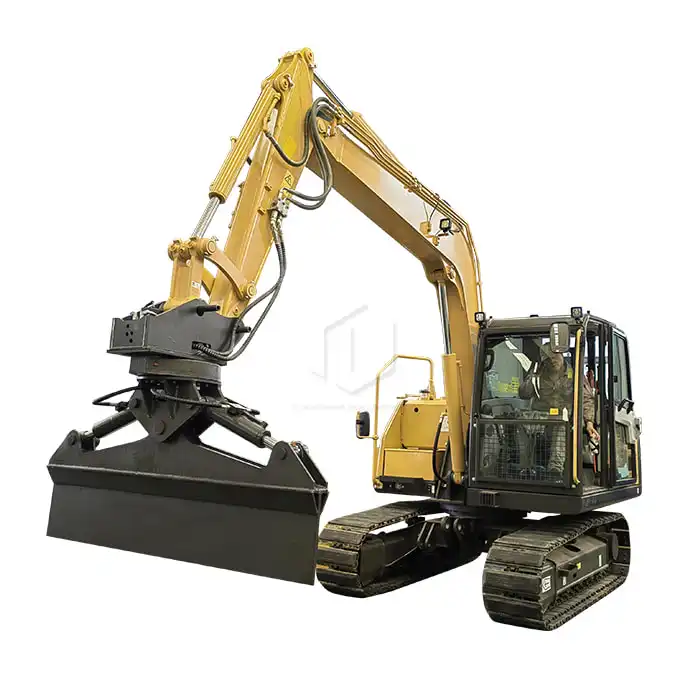 VIEW MOREExcavator Railway Slope Cleaning Machine
VIEW MOREExcavator Railway Slope Cleaning Machine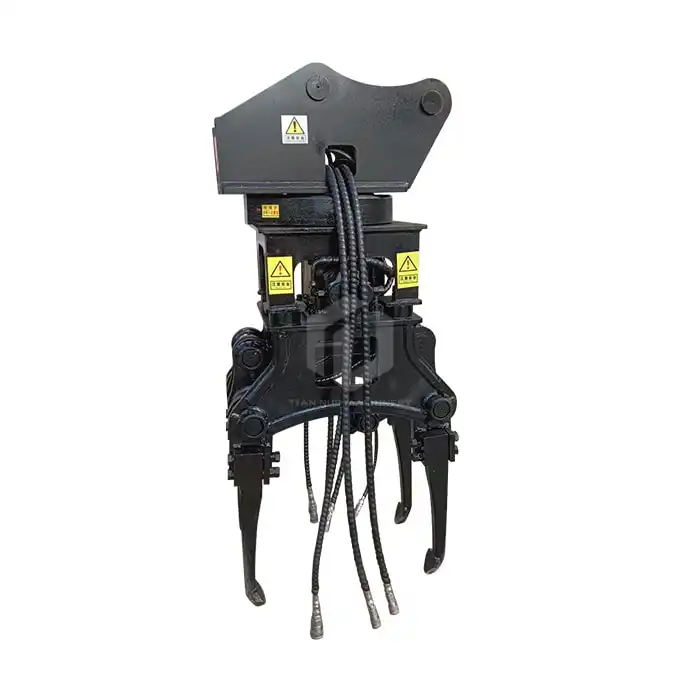 VIEW MOREHigh-vibration hydraulic ballast tamping machine
VIEW MOREHigh-vibration hydraulic ballast tamping machine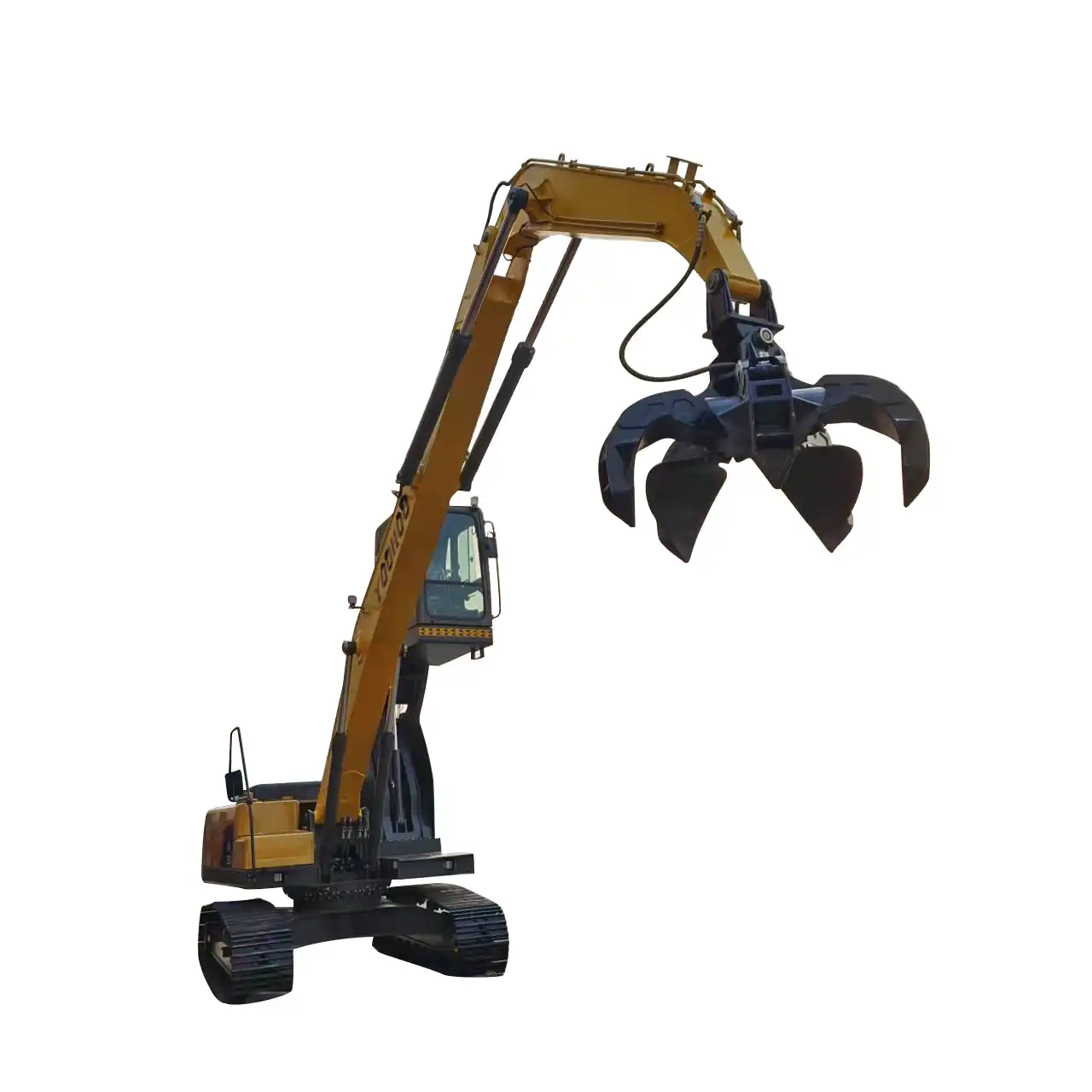 VIEW MOREFolding Arm Steel Grabbing Machine
VIEW MOREFolding Arm Steel Grabbing Machine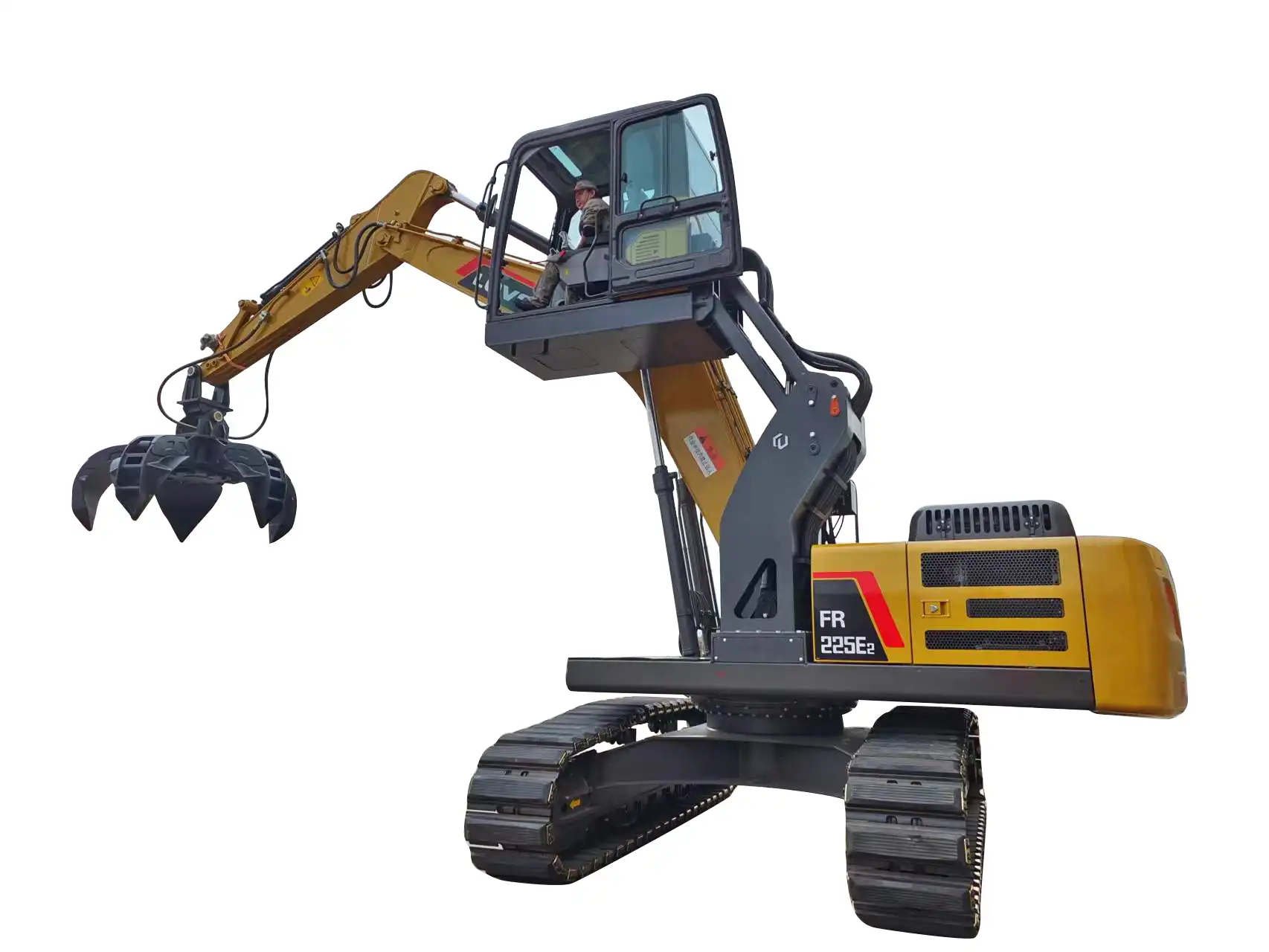 VIEW MOREExcavator lift cab modification
VIEW MOREExcavator lift cab modification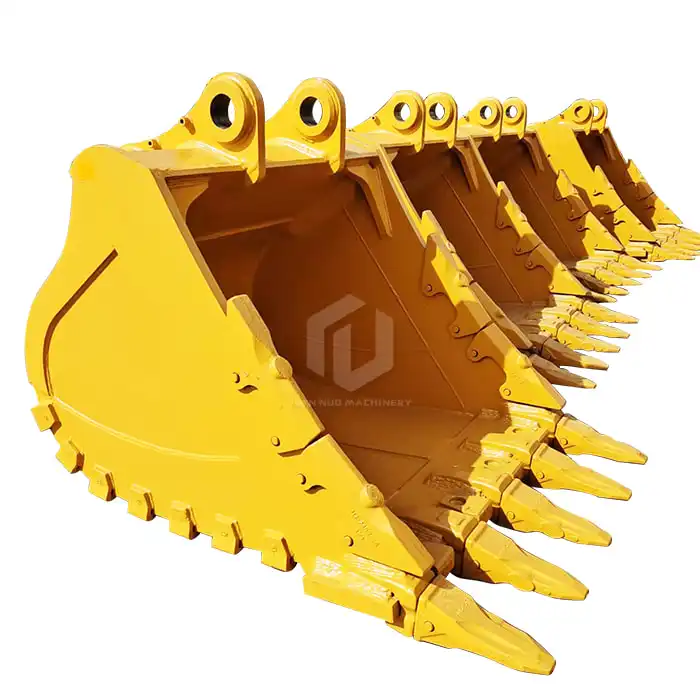 VIEW MOREExcavator Rock Bucket
VIEW MOREExcavator Rock Bucket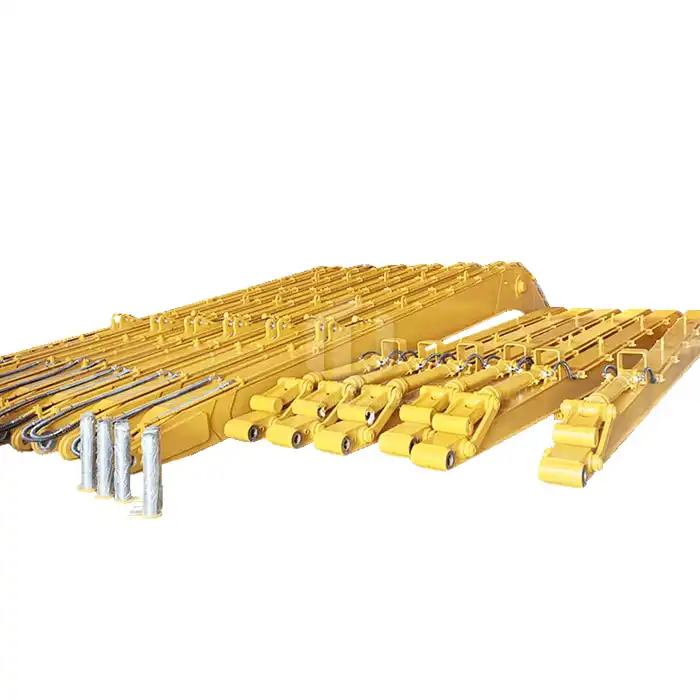 VIEW MOREExcavator Extension Arm
VIEW MOREExcavator Extension Arm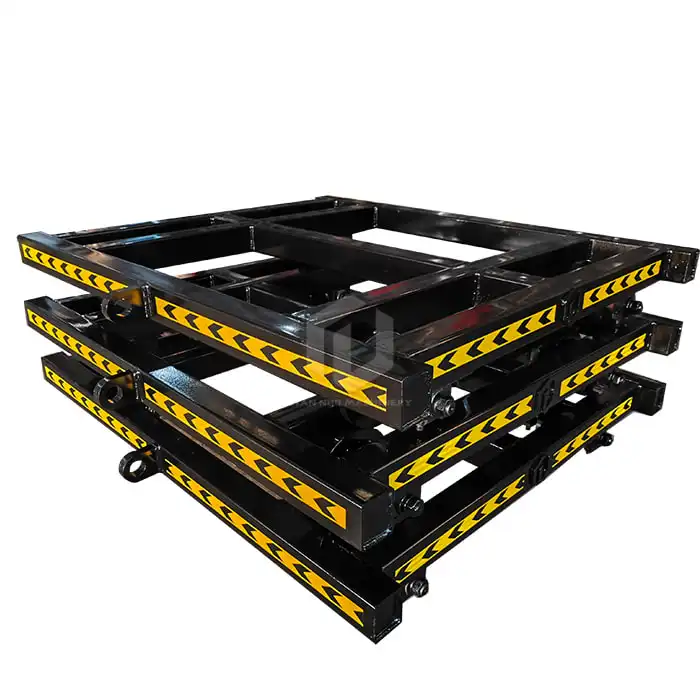 VIEW MORERail Track Trolley
VIEW MORERail Track Trolley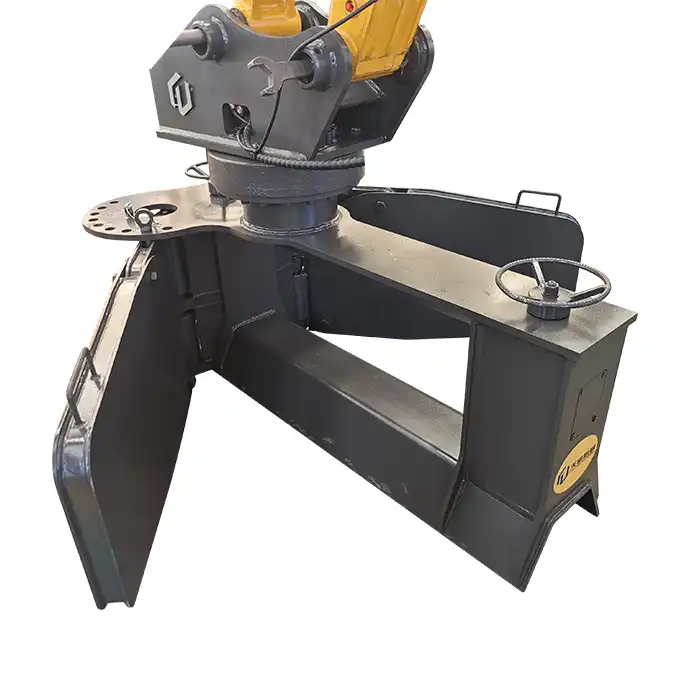 VIEW MORERailway Excavator Ballast Plow
VIEW MORERailway Excavator Ballast Plow

